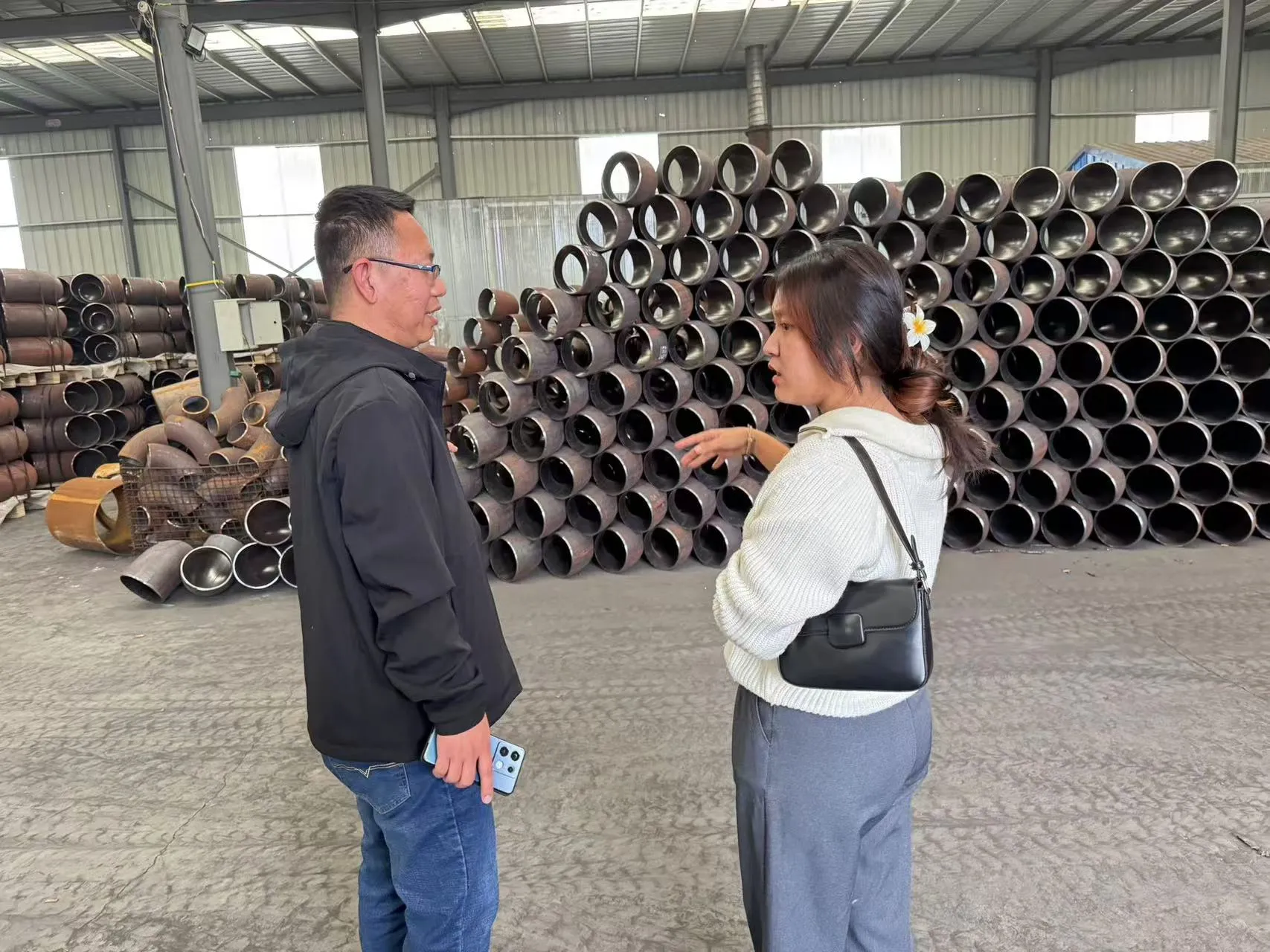-
Cangzhou Yulong Steel Co., Ltd.
-
Phone:
+86 13303177267 -
Email:
admin@ylsteelfittings.com
- English
- Arabic
- Italian
- Spanish
- Portuguese
- German
- kazakh
- Persian
- Greek
- French
- Russian
- Polish
- Thai
- Indonesian
- Vietnamese
- Zulu
- Korean
- Uzbek
- Hindi
- Serbian
- Malay
- Ukrainian
- Gujarati
- Haitian Creole
- hausa
- hawaiian
- Hebrew
- Miao
- Hungarian
- Icelandic
- igbo
- irish
- Japanese
- Javanese
- Kannada
- Khmer
- Rwandese
- Afrikaans
- Albanian
- Amharic
- Armenian
- Azerbaijani
- Basque
- Belarusian
- Bengali
- Bosnian
- Bulgarian
- Catalan
- Cebuano
- China
- China (Taiwan)
- Corsican
- Croatian
- Czech
- Danish
- Esperanto
- Estonian
- Finnish
- Frisian
- Galician
- Georgian
- Kurdish
- Kyrgyz
- Lao
- Latin
- Latvian
- Lithuanian
- Luxembourgish
- Macedonian
- Malgashi
- Malayalam
- Maltese
- Maori
- Marathi
- Mongolian
- Myanmar
- Nepali
- Norwegian
- Norwegian
- Occitan
- Pashto
- Dutch
- Punjabi
- Romanian
- Samoan
- Scottish Gaelic
- Sesotho
- Shona
- Sindhi
- Sinhala
- Slovak
- Slovenian
- Somali
- Sundanese
- Swahili
- Swedish
- Tagalog
- Tajik
- Tamil
- Tatar
- Telugu
- Turkish
- Turkmen
- Urdu
- Uighur
- Welsh
- Bantu
- Yiddish
- Yoruba

Dec . 14, 2024 05:33 Back to list
Understanding ASTM A106 Grade Specifications for Steel Pipe Applications and Standards
Understanding ASTM A106 Grade A Comprehensive Overview
ASTM A106 is a widely recognized standard specification for seamless carbon steel pipes used in high-temperature service. It is particularly important in industries such as oil and gas, power generation, and chemical processing, where reliable and durable piping solutions are essential. This article will delve into the specifications, applications, and benefits of ASTM A106 Grade pipes, shedding light on why they are indispensable in various industrial sectors.
Specifications of ASTM A106
ASTM A106 is categorized into three grades A, B, and C, with Grade B being the most commonly used. The primary composition of ASTM A106 steel includes carbon, manganese, phosphorus, sulfur, and sometimes silicon, which contribute to its strength and ductility. Each grade has different mechanical properties and temperature allowances
- Grade A This grade offers the lowest yield strength and tensile strength, making it less suitable for high-temperature applications. - Grade B Grade B is the most commonly utilized version, providing a balance between strength and weldability. It has a minimum yield strength of 240 MPa (35,000 psi) and tensile strength levels that range from 415 to 550 MPa (60,000 to 80,000 psi). Its ability to withstand elevated temperatures makes it a popular choice for various industries. - Grade C This grade is less common but is used in applications requiring higher strength and temperature resistance, with yield strength exceeding that of Grade B.
According to the ASTM A106 specification, the pipes must be manufactured with a seamless process, which ensures that the pipes have a uniform structure and fewer weak points than welded pipes. The dimensions of the pipes are specified according to nominal pipe sizes (NPS) and are available in various wall thicknesses.
Applications of ASTM A106 Grade Pipes
The primary application of ASTM A106 Grade pipes is in high-temperature and high-pressure environments where the integrity of the piping system is crucial. Some of the most common uses include
astm a106 gr

- Power Generation These pipes are extensively used in power plants for transporting steam and hot water, ensuring efficient operation of turbines and other equipment. - Oil and Gas Industry ASTM A106 pipes are commonly utilized for transporting oil and gas from wellheads to refineries, where high temperature and pressure conditions are a norm. - Chemical Processing In the chemical industry, the need for robust piping systems is paramount. A106 pipes are resistant to various chemicals and can operate under elevated temperatures, making them ideal for transporting reactive materials.
Additionally, these pipes are also used in heating systems, refineries, and various applications that require reliable and sturdy piping solutions.
Advantages of ASTM A106 Grade Pipes
There are several advantages to using ASTM A106 Grade pipes, which make them a preferred choice in many industries
1. High Strength The seamless design combined with the right composition provides excellent strength, making these pipes suitable for high-pressure applications. 2. Heat Resistance They can withstand high temperatures without compromising their structural integrity, which is essential for many industrial processes. 3. Versatility ASTM A106 pipes are available in various grades and dimensions, allowing them to be used in a wide range of applications. 4. Weldability These pipes can be easily welded to other materials, facilitating the construction of complex piping systems.
5. Durability With proper care, ASTM A106 pipes have a long service life, making them a cost-effective solution in the long run.
Conclusion
ASTM A106 Grade pipes are critical components in the infrastructure that supports numerous industries. Their strength, heat resistance, and versatility make them indispensable in high-temperature and high-pressure applications. Understanding the specifications, applications, and advantages of these pipes not only helps industry professionals make informed decisions but also ensures the safety and efficiency of their operations. As industries continue to evolve, the demand for reliable piping solutions like ASTM A106 will undoubtedly remain strong.
Latest news
-
ANSI 150P SS304 SO FLANGE
NewsFeb.14,2025
-
ASTM A333GR6 STEEL PIPE
NewsJan.20,2025
-
ANSI B16.5 WELDING NECK FLANGE
NewsJan.15,2026
-
ANSI B16.5 SLIP-ON FLANGE
NewsApr.19,2024
-
SABS 1123 FLANGE
NewsJan.15,2025
-
DIN86044 PLATE FLANGE
NewsApr.19,2024
-
DIN2527 BLIND FLANGE
NewsApr.12,2024
-
JIS B2311 Butt-Welding Fittings LR/SR 45°/90° /180°Seamless/Weld
NewsApr.23,2024











